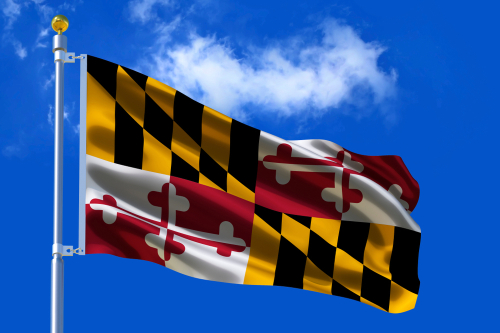Energy Efficiency - November 27, 2024 - By Better Buildings, U.S. Department of Energy
The State of Maryland's Energy Saving Working Group Series
The State of Maryland needed a way to manage and promote energy savings initiatives across a wide portfolio. The Office of Energy & Sustainability (OES), located within the Maryland Department of General Services used its database to discover that 20 state agencies and university campuses in Maryland were responsible for consuming more than 90% of the energy used in state government operations. OES then created a working group composed of these 20 state agencies and campuses to meet quarterly to discuss energy efficiency strategies and share presentations on energy savings technologies and practices. Maryland focused on increasing Administration buy-in and agency participation in energy efficiency efforts to support energy savings at these agencies. To date, the engagement of the working group helped the state reduce its energy use by over 11.2% in a five-year time period.
Barrier: Managing and promoting energy savings across a large group of stakeholders.
Solution: Created a working group of 20 state agencies and university campuses to share energy savings technologies and practices.
Outcome: The State of Maryland reduced energy use by over 11.2% in a five-year period.
Policies: The State of Maryland’s OES partnered with its State Energy Office to draft an Executive Order titled “Energy Savings Goals for State Government.” This Executive Order was approved and released by the Administration in June 2019 and was followed up in 2023 with a new Executive Order increasing the energy savings target. It was the starting point and continual reference for the working groups that focused on reducing energy use intensity (EUI) across the state’s portfolio.
Process: To fully implement the Executive Order “Energy Savings Goals for State Government,” OES developed contacts at these 20 high energy-consuming agencies and university campuses. Directly following the issuance of the executive order, Maryland’s OES team invited all points of contact to an in-person meeting. The group met twice in person before transitioning to virtual meetings following the beginning of the COVID-19 pandemic. The meetings and the executive order caused agency staff to focus on reducing energy use, in particular when engaging in projects where energy-using technologies are replaced. The meetings provided advice, information and case studies that agencies implemented to help achieve the goal.
Outreach: Communication and outreach were at the heart of this initiative. Due to the extensive size of Maryland’s state portfolio of over 100 million square feet, interagency communication was essential. Through direct outreach to these 20 agencies and ongoing collaboration through this working group, the State of Maryland was able to achieve significant reductions in its EUI over a short time.
Tools & Resources:
- Governor Moore’s Executive Order 01.01.2023.07 Leading by Example in State Government
- Annual Reports on Energy savings goals for state government – 2018 through 2023
Measuring Success: The State of Maryland measured its success through reductions in fuel and electricity consumption per square foot, measured in million British thermal units (MMBtu).
Outcomes: In FY18, Maryland consumed 9,626,166MMBtu. By CY23, Maryland had reduced their energy consumption to 8,542,634MMBtu. This is a drop of 1,083,532 MMBtu or approximately 11.2% over 5 years. This reduction in MMBtu has resulted in significant cost savings as well. While utility rates have increased at a greater pace than energy savings, OES estimates that, using FY18 rates, the State has saved more than $16 million compared to a business-as-usual scenario.
This column originally appeared on the Better Buildings website.
 The Better Buildings Solution Center houses over 3,000 resources shared by Better Buildings partners and other stakeholders. These replicable solutions help organizations bolster their bottom line, advance technology innovation, create jobs, and spur energy efficiency investments.
The Better Buildings Solution Center houses over 3,000 resources shared by Better Buildings partners and other stakeholders. These replicable solutions help organizations bolster their bottom line, advance technology innovation, create jobs, and spur energy efficiency investments.
Share this valuable information with your colleagues using the buttons below:
« Back to ColumnsStay Up-To-Date












